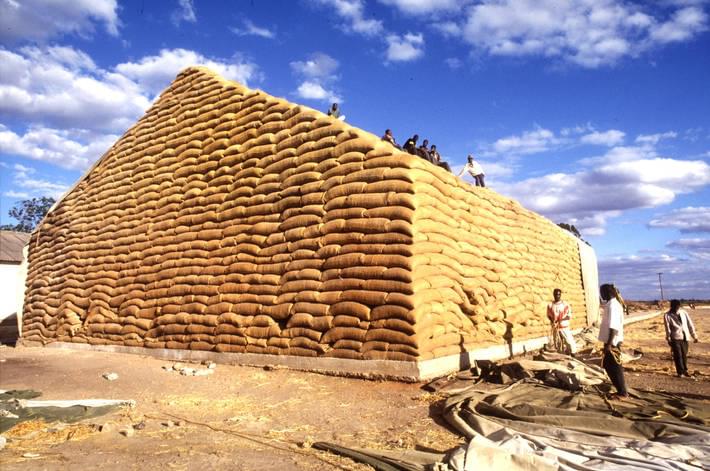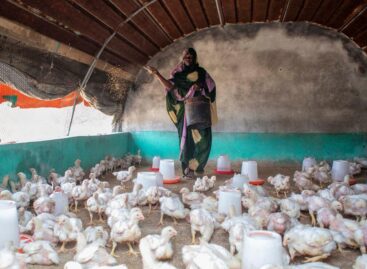FAO: Food Price Index holds steady
The FAO Food Price Index held broadly stable in March, as a jump in dairy prices was offset by drops in cereal, vegetable oil and sugar price quotations, according to a benchmark UN report released today.

The index, which tracks monthly changes in international prices of a basket of food commodities, averaged 167 points, down two points from February and some 3.6 percent below its level in March 2018.
The Food and Agriculture Organization also released new figures for the world’s cereal production and inventory levels, reflecting major upward adjustments made on the back of China’s 2017 agricultural census results.
The FAO Dairy Price Index rose 6.2 percent during the month, marking its third consecutive increase, driven by increased import demand for butter, cheese and Whole Milk Powder, ahead of an expected tightening in export availabilities from Oceania.
The FAO Meat Price Index also rose though slightly, by 0.4 percent from February, buoyed by growing import demand from China for pig, bovine and poultry meats.
By contrast, the FAO Vegetable Oil Price Index declined by 4.4 percent amid subdued import demand for palm oil, increased soy oil crushing in the United States of America and accumulating rapeseed inventories in Canada.
The FAO Cereal Price Index dropped 2.2 percent in the month, led by declining prices of wheat and maize, both of which have ample exportable supplies and favorable harvest prospects in key producing countries. International rice prices were mildly firmer in March.
The FAO Sugar Price Index declined by 2.1 percent, as harvests in key producing countries were larger than previously anticipated. India’s latest production estimates point to an 8.0 percent year-on-year increase during the period from October 2018 through January 2019 and is now expected to overtake Brazil as the world’s largest sugar producer.
World cereal markets remain well balanced
The Cereal Supply and Demand Brief, also released today, contained sharply raised estimates for global cereal production, utilization and stocks in the wake of new data from China for the period 2007-2017.
Incorporating those revisions, FAO’s current world cereal production estimate for 2018 stands at 2 655 million tonnes. The new figure is 46 million tonnes higher than the March estimate, but still represents a 1.8 percent year-on-year decline.
The forecast for global cereal utilization in 2018/19 has been raised to 2 683 million tonnes, with world wheat utilization set to reach an all-time high of 748 million tonnes. World rice utilization is pegged at 511 million tonnes and that of maize at 1 425 million tonnes.
FAO’s new estimate for global cereal stocks for crop years ending in 2019 has been scaled up by almost 11 percent to 849 million tonnes, mostly reflecting larger holdings in China. As those inventories accumulated over time, the annual change in cereal socks is expected to decline by 2.9 percent from their opening levels, lowering the 2018/19 stock-to-use ratio to 30.7 percent from 32.6 percent in the 2017/18 period.
Global rice inventories are forecast to reach an all-time high of 181 million tonnes, reflecting China’s changes but also expectations of a bumper 2018 crop in India and a strong pace of public domestic procurement in the country.
World trade in cereals in 2018/19 is expected to decline by 2.2 percent from the previous season to total 412 million tonnes.
FAO’s forecast for world wheat production in 2019 remains unchanged from last month at 757 million tonnes, up 4.0 percent from the 2018 level due largely to higher expected production in the European Union, the Russian Federation and Ukraine.
Tackling new data from China’s 2017 agricultural census
In October the National Bureau of Statistics of China released official revisions to historical production estimates of wheat, maize, rice and several other commodities, obtained from the country’s 2017 agricultural census, which generated improved data on planted area and yields.
The new data indicate that total cereal production over the 11-year period spanning from the previous census in 2007 was around 312 million tonnes higher than earlier reported. More than 80 percent of the revision correspond to maize.
The absence of corresponding official revisions to China’s cereal utilization and stocks data posed a challenge, catalysing in a major review of the country’s cereal balances and feed use estimates that was carried out by FAO and the G20 Agricultural Market Information System (AMIS), working closely with the Chinese Academy of Agricultural Sciences (CAAS) and experts from other agencies and the private sector.
The exercise led FAO to raise its forecast for China’s total cereal feed utilization in 2018/19 to 194 million tonnes from 182 million tonnes. The country’s carryover stocks were also raised by 78 million tonnes to 422 million tonnes. Maize accounted for the lion’s share of these changes.
The complex process of establishing a consistent data series means that China’s cereal supply and demand balances will continue to be closely monitored and may still evolve.
Related news
FAO: International food prices have been declining since September
🎧 Hallgasd a cikket: Lejátszás Szünet Folytatás Leállítás Nyelv: Auto…
Read more >FAO-Ministry of Agriculture Scholarship Program Continues
🎧 Hallgasd a cikket: Lejátszás Szünet Folytatás Leállítás Nyelv: Auto…
Read more >FAO: 2026 is the International Year of Rangelands and Pastoralists
🎧 Hallgasd a cikket: Lejátszás Szünet Folytatás Leállítás Nyelv: Auto…
Read more >Related news
Experience, timing, awareness: a new travel logic is emerging towards 2026
🎧 Hallgasd a cikket: Lejátszás Szünet Folytatás Leállítás Nyelv: Auto…
Read more >Online Travel Expo introduced as a new digital professional platform
🎧 Hallgasd a cikket: Lejátszás Szünet Folytatás Leállítás Nyelv: Auto…
Read more >Tipping rate approaches 10% in Hungary
🎧 Hallgasd a cikket: Lejátszás Szünet Folytatás Leállítás Nyelv: Auto…
Read more >






